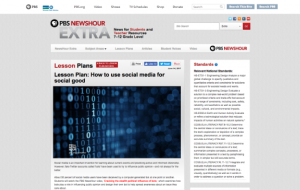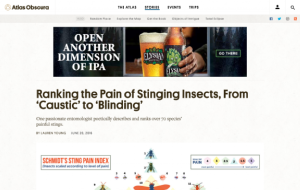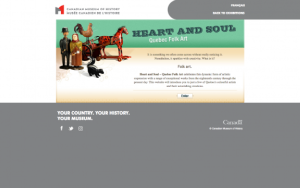 |
August 11, 2017 Volume 23, Number 32 |
Research and Education |
General Interest |
Network Tools |
In the News |
Research and EducationBack to Top | |
 |
|
 |
|
 |
|
 |
|
 |
|
 |
|
 |
|
 |
|
General InterestBack to Top | |
 |
|
 |
|
 |
|
 |
|
 |
|
 |
|
 |
|
Network ToolsBack to Top | |
 |
|
 |
|
In the NewsBack to Top | |
On the Island of New Caledonia, Pollution Causes the Turtle-Headed Sea Snake to Change Color | |
|
City-dwelling sea snakes are changing colors for a strange reason Sea snakes lose their stripes to deal with pollution How Humans Turned a Sea Snake to the Dark Side YouTube: Industrial Melanism in a Seasnake The Garden of Our Neglect: How Humans Shape the Evolution of Other Species Peppered Moth Simulation Turtle-headed sea snakes (Emydocephalus annulatus), which can be found near Australia and are named for their turtle-like heads, typically have white and black stripes or splotches. However, on the island of New Caledonia, these sea snakes are almost entirely black in color. On Thursday, a team of scientists published an article in Current Biology that explains how this color variation is tied to pollution, adding sea snakes to the list of creatures that experience "industrial melanism." After examining 1,400 sea snakes, the team found that black sea snakes tended to live near industrial areas. In addition, these darker sea snakes had higher levels of metals such as zinc in their skin, and they shed their skin more frequently. Unike the most famous example of industrial melanism, the peppered moth, darker turtle-headed sea snakes are no better able to camouflage themselves than their stripped counterparts. So why are urban-dwelling sea snakes darker in color? One possibility is that they are able to trap pollutants in their skin, which they can then shed, protecting their internal organs from contaminants. Rick Shine, one of the authors of this study, warns that while this possible adaptation is important, it is also important to address pollution: "Living systems are resilient....But there's a limit to that resilience." [MMB] The first three articles take readers to summaries of this new study from Mary Beth Griggs of Popular Science, Rachael Lallensack of Nature, and Ed Yong of The Atlantic. The fourth link takes readers to a short video of Rick Shine explaining this new research with numerous images of the turtle-headed sea snake. Next, readers will find a 2012 Scientific American article that describes ten different ways that humans have impacted the evolution of other species, including the introduction of viruses, plants, and rats. Finally, K-12 science educators may be interested in this lesson plan, courtesy of the Biology Corner, that engages young learners with the peppered moth, the most famous example of industrial melanism. | |





